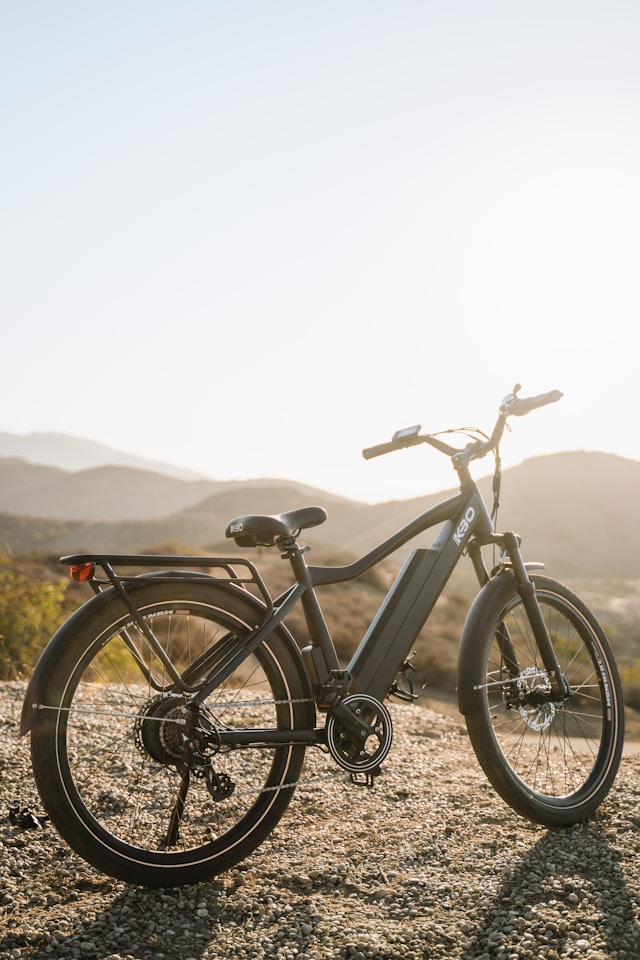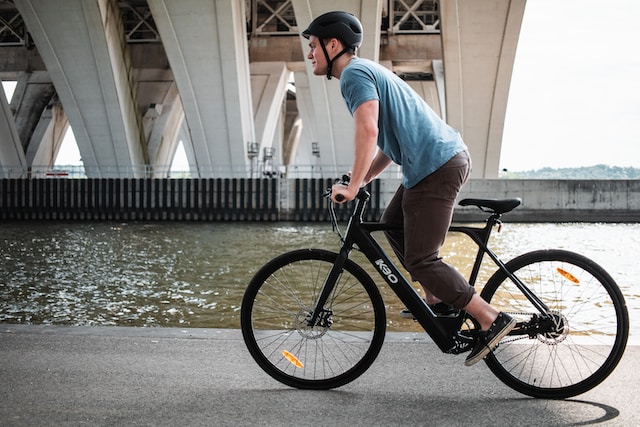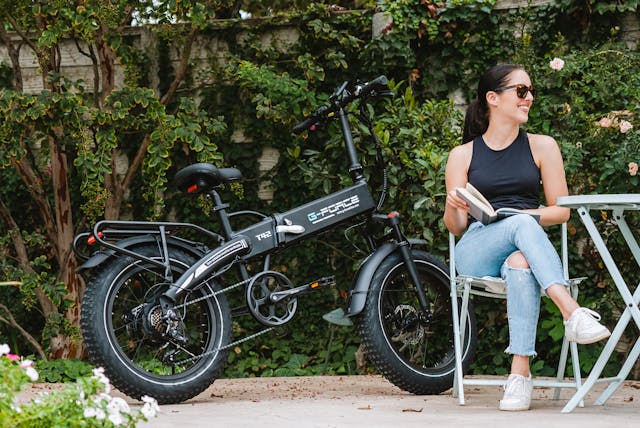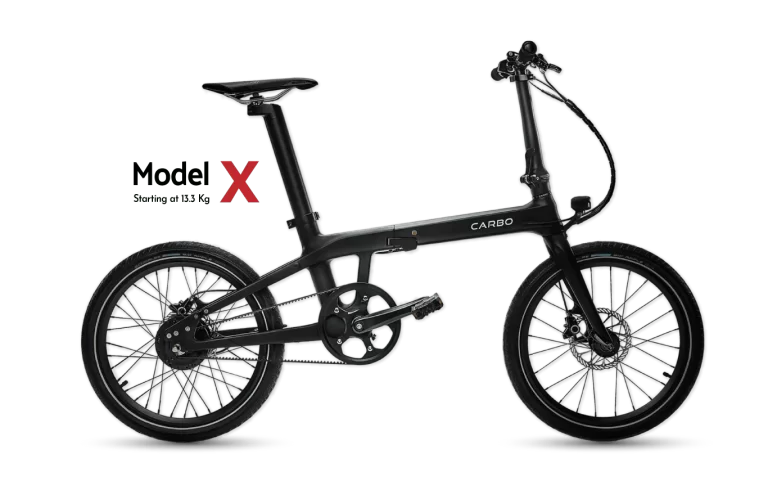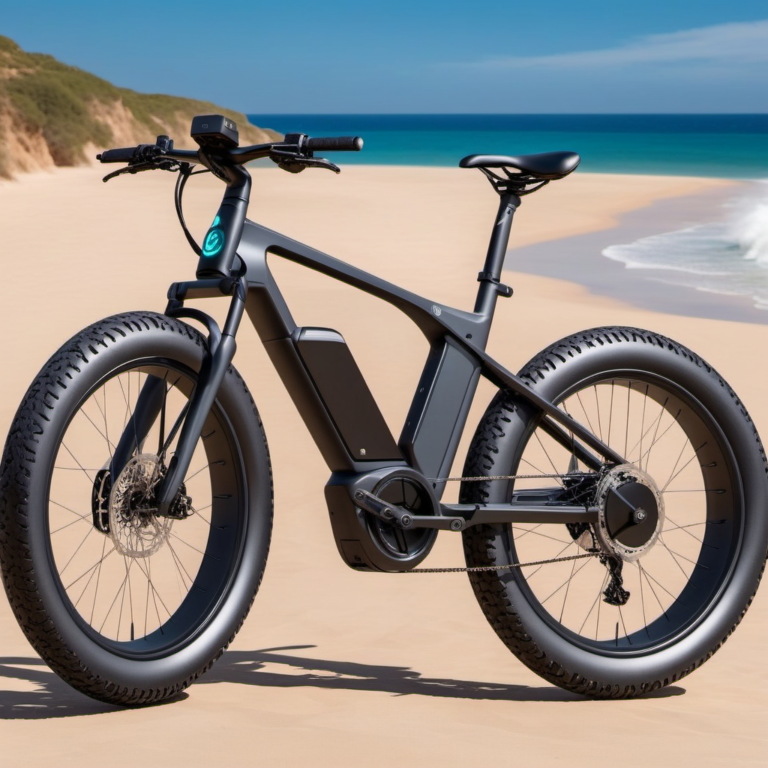The Complete Guide to Electric Bike Charging: Tips, Tricks, and Best Practices
Electric bikes (e-bikes) have revolutionized urban commuting and outdoor recreation, offering a convenient, eco-friendly, and cost-effective alternative to traditional bicycles and gas-powered vehicles. However, the true potential of these modern marvels lies not just in their sleek design or pedal-assist capabilities but also in the way we power them. Proper charging is the lifeblood of any electric bike, determining not only its performance but also its longevity and reliability.
In today’s fast-paced world, where time is of the essence, understanding the intricacies of electric bike charging is essential. Imagine effortlessly cruising through city streets or conquering rugged terrains, only to be sidelined by a drained battery. Such scenarios are not only inconvenient but can also disrupt your entire day. That’s where our comprehensive guide comes in.
The Complete Guide to Electric Bike Charging: Tips, Tricks, and Best Practices is your go-to resource for mastering the art of e-bike charging. Whether you’re a seasoned rider or new to the electric bike scene, this guide is designed to empower you with the knowledge and skills needed to optimize your charging experience.
Throughout this guide, we’ll delve deep into the nuances of electric bike charging, covering everything from the basics of battery maintenance to advanced techniques for maximizing efficiency. By the time you reach the end, you’ll not only be well-versed in the dos and don’ts of e-bike charging but also equipped with practical tips and insights to elevate your riding experience to new heights.
Join us on this journey as we explore the importance of proper charging practices, uncover the secrets to fast and efficient charging, and discover how to prolong the lifespan of your electric bike battery. Whether you’re commuting to work, embarking on weekend adventures, or simply enjoying the thrill of the ride, our guide will ensure that your electric bike is always ready to take you wherever you want to go. So, saddle up and let’s dive into the world of electric bike charging!
Key Takeaways
- Prioritize Safety and Follow Manufacturer Guidelines:
- Safety should always be paramount when it comes to electric bike charging. Follow the manufacturer’s guidelines meticulously to ensure safe and efficient charging practices. This includes using compatible chargers, adhering to recommended charging parameters, and avoiding overcharging or overheating.
- Regular Maintenance Enhances Battery Performance and Lifespan:
- Just like any other electronic device, electric bike batteries benefit from regular maintenance. Periodically inspecting the battery for signs of damage, keeping connections clean, and storing the battery properly can help optimize performance and extend its lifespan.
- Fast Charging Can Be Convenient but Requires Caution:
- Fast charging technologies offer the convenience of shorter charging times, but they also require caution to prevent potential risks. Be mindful of the charger’s output rating, monitor charging progress closely, and avoid prolonged exposure to high temperatures during fast charging to safeguard battery health.
- Efficient Charging Routines Optimize Daily Commuting Experiences:
- Tailoring your charging routine to fit your daily commuting needs can enhance your riding experience and ensure that your electric bike is always ready for the road. Preemptive and opportunistic charging strategies can help maintain consistent battery performance throughout the day, reducing the risk of running out of power mid-commute.
- Avoid Common Charging Mistakes to Prevent Damage:
- Understanding and avoiding common charging mistakes, such as overcharging, charging in extreme temperatures, or using incompatible chargers, is essential for preserving battery health and longevity. By following best practices and being proactive about charging safety, you can prevent damage and prolong your battery’s lifespan.
- Stay Informed About Advancements in Electric Bike Charging Technology:
- The electric bike industry is constantly evolving, with new advancements in battery technology and charging infrastructure emerging regularly. Stay informed about the latest developments and innovations to make informed decisions about charging equipment and practices that best suit your needs and preferences.
- Consider Environmental Factors and Weather Conditions When Charging:
- Environmental factors, such as temperature and humidity, can impact the charging performance and battery health of electric bikes. Take into account weather conditions when charging your bike, and avoid exposing the battery to extreme temperatures or moisture to prevent damage and ensure optimal charging efficiency.
RELATED CONTENT – Choosing the Perfect Electric Commuter Bike
Understanding Electric Bike Charging Basics:
Electric bike charging may seem straightforward at first glance, but beneath its surface lies a realm of crucial considerations that can significantly impact your riding experience. In this section, we’ll unravel the fundamentals of electric bike charging, shedding light on the intricacies that every rider should be aware of.
Explanation of the Fundamentals:
At its core, electric bike charging involves replenishing the energy stored within the battery pack that powers your bike. This process typically occurs through an electrical connection between the charger and the battery, where electricity flows from the outlet into the battery cells, gradually restoring their charge.
Understanding the voltage and current requirements of your electric bike battery is paramount. Voltage refers to the force or pressure of the electrical energy, while current represents the rate of flow. Different battery types and models may have varying voltage and current specifications, necessitating careful consideration to ensure compatibility with the charger.
Discussion on Battery Types and Charging Requirements:
Electric bike batteries come in various forms, each with its unique characteristics and charging requirements. Common types include lithium-ion (Li-ion), nickel-cadmium (Ni-Cd), and nickel-metal hydride (NiMH) batteries, among others. Li-ion batteries, in particular, have become ubiquitous in the e-bike industry due to their high energy density, lightweight design, and relatively low maintenance requirements.
When it comes to charging, it’s crucial to use a charger specifically designed for your battery type and model. Using an incompatible charger can not only lead to inefficient charging but also pose safety risks, potentially causing damage to the battery or even triggering a fire hazard.
Importance of Adhering to Manufacturer Guidelines:
Manufacturers provide detailed specifications and guidelines for charging their electric bike batteries, and adhering to these recommendations is paramount. These guidelines typically cover aspects such as charging voltage, current, and temperature limits, as well as charging duration and frequency.
Deviation from manufacturer guidelines can compromise the performance, reliability, and safety of your electric bike battery. Overcharging, undercharging, or exposing the battery to extreme temperatures can accelerate degradation, reduce capacity, and shorten lifespan.
By following manufacturer guidelines diligently, you not only ensure optimal charging performance but also safeguard the longevity and integrity of your electric bike battery investment.
Understanding these fundamental principles lays the groundwork for effective electric bike charging practices. As we delve deeper into advanced techniques and best practices, remember that a solid understanding of the basics is key to mastering the art of e-bike charging.
RELATED CONTENT – Ultimate Guide to Electric Bike Commuting
RELATED CONTENT – Electric Bike Commuting: Overcoming Common Challenges
Fast and Efficient Electric Bike Charging:
Efficiency and speed are paramount when it comes to electric bike charging, especially for riders who are constantly on the go. In this section, we’ll explore strategies and technologies aimed at accelerating the charging process without compromising safety or battery health.
Tips and Techniques for Speeding Up the Charging Process:
Maximizing charging efficiency begins with optimizing your charging routine. Here are some tried-and-tested tips and techniques to help you minimize charging time without sacrificing battery performance:
- Use a High-Powered Charger: Investing in a charger with a higher output voltage and current rating can significantly reduce charging time. Look for chargers specifically designed for fast charging electric bike batteries, ensuring compatibility with your battery type and model.
- Charge at the Right Time: Charging your electric bike battery when it’s partially drained, rather than completely empty, can expedite the process. Aim to top up your battery whenever convenient, rather than waiting until it’s completely depleted.
- Optimize Charging Conditions: Ensure proper ventilation and temperature control during charging to maximize efficiency and prevent overheating. Avoid exposing the battery to extreme temperatures, as this can impede charging performance and compromise battery health.
- Monitor Charging Progress: Keep an eye on the charging indicator or use a smart charger with built-in monitoring capabilities to track charging progress. Once the battery reaches full capacity, promptly disconnect the charger to avoid overcharging.
Introduction to Fast Charging Technologies:
Fast charging technologies have revolutionized the way we recharge electric bike batteries, offering rapid replenishment without sacrificing battery longevity. These technologies leverage advanced charging algorithms and hardware to deliver high-current charging while minimizing heat generation and battery stress.
Common fast charging technologies include:
- Quick Charge: Quick Charge technology utilizes high-current charging protocols to expedite the charging process while maintaining safety and efficiency. Compatible chargers and batteries work in tandem to deliver faster charging speeds without compromising battery health.
- Power Delivery (PD): Power Delivery is a universal fast charging standard that allows devices to negotiate higher voltage and current levels for faster charging. PD-compatible chargers and devices communicate with each other to optimize charging parameters dynamically.
Safety Considerations When Fast Charging Electric Bike Batteries:
While fast charging offers undeniable benefits in terms of convenience and time savings, it’s essential to prioritize safety above all else. Here are some key safety considerations to keep in mind when fast charging electric bike batteries:
- Use Certified Chargers: Ensure that any fast charger you use is certified by reputable organizations such as UL (Underwriters Laboratories) or CE (Conformité Européenne) to meet stringent safety standards.
- Avoid Overheating: Monitor charging temperatures closely and avoid exposing the battery to excessive heat, as this can degrade battery performance and pose safety risks.
- Follow Manufacturer Guidelines: Adhere to the recommended charging parameters specified by the electric bike manufacturer to prevent overcharging, overheating, and other potential issues.
To streamline the charging process and ensure your electric bike is always ready for the road with minimal downtime, it’s essential to embrace fast charging technologies, prioritize safety, and follow these tips diligently.
How to Properly Charge Your Electric Bike Battery:
Charging your electric bike battery may seem like a straightforward task, but adhering to proper procedures is essential for maximizing battery performance and longevity. In this section, we’ll provide a step-by-step guide on the correct charging procedure, along with dos and don’ts to ensure optimal charging outcomes.
Step-by-Step Guide on the Correct Charging Procedure:
Follow these steps to properly charge your electric bike battery:
- Choose the Right Charger: Use a charger specifically designed for your electric bike battery type and model. Using an incompatible charger can result in inefficient charging or even damage the battery.
- Prepare the Battery: Ensure that the battery is securely attached to your electric bike or remove it if necessary. Check for any visible damage or debris that may interfere with the charging process.
- Connect the Charger: Plug the charger into a compatible power outlet, ensuring that the voltage and current ratings match the charger specifications. Then, connect the charger to the charging port on your electric bike battery.
- Monitor Charging Progress: Keep an eye on the charging indicator lights or monitor the charging progress through a smart charger if available. Most chargers will indicate when the battery is fully charged, at which point you should promptly disconnect the charger.
- Store the Battery: Once fully charged, disconnect the charger and store the battery in a cool, dry place away from direct sunlight and extreme temperatures. Avoid leaving the battery connected to the charger for extended periods, as overcharging can degrade battery performance.
Dos and Don’ts of Electric Bike Battery Charging:
Dos:
- Do follow the manufacturer’s recommended charging guidelines to ensure optimal performance and safety.
- Do charge your electric bike battery in a well-ventilated area to prevent overheating.
- Do periodically inspect the battery and charger for any signs of damage or wear.
- Do use a surge protector or power strip with built-in surge protection to safeguard against power surges.
Don’ts:
- Don’t attempt to charge a damaged or malfunctioning battery, as this can pose safety risks.
- Don’t expose the battery to extreme temperatures or moisture during charging, as this can damage the cells.
- Don’t leave the battery connected to the charger for prolonged periods after reaching full charge, as this can lead to overcharging.
Importance of Monitoring Charging Progress:
Monitoring the charging progress is essential for ensuring the safety and efficiency of the charging process. By keeping an eye on the charging indicator lights or using a smart charger with monitoring capabilities, you can detect any abnormalities or issues that may arise during charging, such as overheating or voltage fluctuations. Promptly addressing these issues can help prevent damage to the battery and ensure that it remains in optimal condition for longer.
By following these guidelines and best practices, you can ensure that your electric bike battery is charged properly, safely, and efficiently, allowing you to enjoy extended rides with peace of mind.
RELATED CONTENT – Electric Bike Buying Guide
Tips for Extending the Lifespan of Your Electric Bike Battery Through Charging:
Your electric bike battery is the heart of your ride, providing the power needed to propel you through city streets and scenic trails. Maximizing its lifespan through proper charging practices is essential for ensuring long-term performance and enjoyment. In this section, we’ll explore strategies for extending the lifespan of your electric bike battery and preserving its efficiency.
Strategies for Maximizing Battery Longevity:
- Avoid Deep Discharges: Minimize deep discharges by recharging your electric bike battery before it’s fully drained. Deep discharges can put additional strain on the battery cells, leading to premature wear and reduced lifespan.
- Charge at Moderate Temperatures: Extreme temperatures, both hot and cold, can negatively impact battery performance and longevity. Whenever possible, charge your electric bike battery in moderate temperature conditions to optimize charging efficiency and protect the cells from thermal stress.
- Use Partial Charging: Instead of waiting for your battery to fully deplete before recharging, top it up regularly with partial charges. This approach helps maintain a consistent state of charge, reducing the strain on the battery cells and prolonging their lifespan.
Proper Storage and Maintenance Practices:
- Store in a Cool, Dry Place: When not in use, store your electric bike battery in a cool, dry location away from direct sunlight and moisture. Avoid exposing the battery to extreme temperatures, as excessive heat or cold can accelerate degradation.
- Regular Inspection: Periodically inspect your electric bike battery for signs of damage or wear, such as corrosion on the terminals or swelling of the casing. Address any issues promptly to prevent further damage and ensure optimal performance.
- Keep Connections Clean: Clean the battery terminals and charging port regularly to remove dirt, debris, and corrosion that can impede charging efficiency. Use a soft brush or cloth and a mild cleaning solution to gently wipe away any buildup.
Avoiding Common Pitfalls That Can Degrade Battery Life:
- Overcharging: Avoid leaving your electric bike battery connected to the charger for prolonged periods after it reaches full charge. Overcharging can cause the battery cells to degrade faster and reduce overall lifespan.
- Excessive Heat: Exposure to high temperatures, whether during charging or storage, can accelerate battery degradation. Take precautions to keep your electric bike battery cool and avoid prolonged exposure to heat sources.
- Rapid Charging: While fast charging may be convenient, it can also increase the stress on the battery cells and lead to premature wear. Whenever possible, opt for slower charging rates to reduce strain on the battery and prolong its lifespan.
To maximize the lifespan of your electric bike battery and ride with confidence, it’s crucial to implement these strategies and steer clear of common pitfalls. Proper charging practices are key to preserving your electric bike’s power source, ensuring optimal performance and longevity.
Common Mistakes to Avoid When Charging Your Electric Bike:
While charging your electric bike may seem straightforward, certain common mistakes can inadvertently lead to damage to your battery and charger. In this section, we’ll identify these typical errors, provide solutions to prevent harm to your batteries and chargers, and emphasize the importance of regular inspections and maintenance.
Identification of Typical Errors Made During the Charging Process:
- Overcharging: Leaving your electric bike battery connected to the charger for extended periods after it reaches full charge can lead to overcharging. This can cause the battery cells to degrade faster and reduce overall lifespan.
- Charging in Extreme Temperatures: Charging your electric bike battery in excessively hot or cold conditions can accelerate degradation and negatively impact performance. Extreme temperatures can also pose safety risks and lead to premature wear.
- Using Incompatible Chargers: Using a charger that is not specifically designed for your electric bike battery type and model can result in inefficient charging or even damage to the battery. Always use chargers recommended by the manufacturer.
Solutions to Prevent Damage to Batteries and Chargers:
- Monitor Charging Progress: Keep an eye on the charging indicator lights or use a smart charger with monitoring capabilities to track charging progress. Disconnect the charger promptly once the battery reaches full capacity to prevent overcharging.
- Control Charging Environment: Charge your electric bike battery in a well-ventilated area with moderate temperatures to prevent overheating or exposure to extreme conditions. Avoid charging near heat sources or in direct sunlight.
- Invest in Quality Chargers: Invest in high-quality chargers that are specifically designed for your electric bike battery type and model. Certified chargers from reputable manufacturers are more likely to deliver safe and efficient charging performance.
Importance of Regular Inspections and Maintenance:
- Inspect for Damage: Regularly inspect your electric bike battery and charger for signs of damage, wear, or corrosion. Address any issues promptly to prevent further damage and ensure safe charging operation.
- Clean Connections: Keep the battery terminals and charging port clean and free of dirt, debris, and corrosion. Use a soft brush or cloth and a mild cleaning solution to gently wipe away any buildup.
- Perform Routine Maintenance: Follow the manufacturer’s recommended maintenance schedule for your electric bike battery and charger. This may include tasks such as firmware updates, software calibration, and periodic testing to ensure optimal performance and safety.
By avoiding common mistakes, implementing preventive measures, and staying vigilant with inspections and maintenance, you can safeguard your electric bike battery and charger against damage and ensure reliable charging performance for years to come. Remember that proper care and attention are essential for preserving the longevity and efficiency of your electric bike’s power source.
RELATED CONTENT – Can You Charge Electric Bikes at Home?
RELATED CONTENT – Do Electric Bikes Charge When You Pedal?
Optimizing Your Electric Bike Charging Routine for Daily Commuting:
For urban commuters relying on electric bikes, a well-planned charging routine is essential to ensure uninterrupted rides throughout the day. In this section, we’ll explore how to tailor your charging habits to fit your commuting needs, strategies for maintaining consistent battery performance, and considerations for urban commuters when it comes to charging options.
Tailoring Charging Habits to Fit Commuting Needs:
- Preemptive Charging: Anticipate your daily commuting distance and charge your electric bike battery accordingly the night before or during periods of downtime throughout the day. This ensures that your battery is fully charged and ready for your commute.
- Opportunistic Charging: Take advantage of charging opportunities during breaks or at work if charging stations are available. Even a short charging session can top up your battery and extend your range for the journey home.
Strategies for Ensuring Consistent Battery Performance Throughout the Day:
- Battery Management Systems (BMS): Invest in electric bikes equipped with advanced Battery Management Systems (BMS) that monitor and regulate battery performance. BMS helps optimize charging and discharge cycles, maximizing battery lifespan and performance.
- Smart Charging: Utilize smart chargers or charging systems that allow you to set charging schedules and monitor battery status remotely. This enables you to optimize charging times and ensure that your battery is always ready when you need it.
Charging Options and Considerations for Urban Commuters:
- Public Charging Stations: Many urban areas offer public charging stations for electric vehicles, which can also be used to charge electric bikes. Research charging station locations along your commuting route and plan your journey accordingly.
- Workplace Charging: If your workplace offers charging facilities, take advantage of them to top up your battery during the day. Coordinate with your employer to ensure access to charging stations and make charging part of your daily routine.
- Portable Chargers: Consider investing in a portable charger or power bank that you can carry with you for on-the-go charging. These compact devices allow you to replenish your battery wherever you are, providing added flexibility and peace of mind.
Tailoring your charging routine to match your commuting needs, implementing strategies for consistent battery performance, and exploring available charging options for urban commuters ensure that your electric bike is always prepared to transport you to your destination. With meticulous planning and optimization, commuting with an electric bike becomes not just convenient, but also sustainable and enjoyable.
In-Depth Analysis of Charging Times for Various Electric Bike Models:
Understanding the charging times of different electric bike models is crucial for planning your rides and optimizing your charging routine. In this section, we’ll delve into the factors that influence charging times, compare the durations across various bike models, and explore the impact of battery capacity and charging technology.
Examination of Factors Influencing Charging Times:
- Battery Capacity: The capacity of the electric bike battery, measured in watt-hours (Wh) or ampere-hours (Ah), significantly influences charging times. Larger capacity batteries generally take longer to charge compared to smaller ones.
- Charging Technology: The type of charging technology employed by the electric bike and charger plays a crucial role in determining charging times. Fast charging technologies, such as Quick Charge and Power Delivery, can significantly reduce charging durations compared to standard charging methods.
- Charger Output: The output power of the charger, measured in watts (W) or volts (V) and amperes (A), directly impacts charging times. Higher output chargers can deliver more power to the battery, resulting in faster charging.
Comparison of Charging Durations Across Different Bike Models:
- Entry-Level Models: Electric bikes with smaller battery capacities and basic charging technologies typically have shorter charging times. These models are suitable for short commutes and urban rides where frequent charging may be necessary.
- Mid-Range Models: Mid-range electric bikes often feature larger battery capacities and more advanced charging technologies, resulting in longer but still manageable charging times. These models strike a balance between range and charging convenience.
- High-End Models: Premium electric bikes equipped with high-capacity batteries and cutting-edge charging technology may have longer charging times due to their increased energy storage and faster charging rates. However, the extended range and performance capabilities justify the investment for avid riders.
Understanding the Impact of Battery Capacity and Charging Technology:
- Battery Capacity: Electric bike batteries with higher capacities require longer charging times to reach full charge compared to batteries with lower capacities. However, larger capacity batteries also offer extended range and endurance, making them suitable for longer rides.
- Charging Technology: Advanced charging technologies, such as fast charging protocols and smart charging algorithms, can significantly reduce charging times without compromising battery health. These technologies optimize the charging process, delivering faster and more efficient results.
By considering these factors and understanding the nuances of charging times across various electric bike models, riders can make informed decisions when selecting a bike that suits their needs and preferences. Whether prioritizing speed, range, or convenience, there is a diverse range of electric bike options available to accommodate every rider’s lifestyle and requirements.
FAQs
The frequency of charging your electric bike battery depends on various factors, including your riding habits, battery capacity, and daily commuting distance. As a general rule of thumb, it’s advisable to charge your battery after each ride, especially if you’ve covered a significant distance or depleted a substantial portion of the battery’s charge. Avoid letting the battery discharge completely before recharging, as frequent deep discharges can accelerate battery degradation. Instead, aim for regular top-ups to maintain a consistent state of charge and prolong battery lifespan.
Modern electric bike batteries are equipped with built-in management systems to prevent overcharging and protect against damage. However, it’s still essential to follow proper charging practices to minimize the risk of overcharging. Most electric bike chargers will automatically shut off or enter a trickle charge mode once the battery reaches full capacity, preventing overcharging. To further mitigate the risk, always use chargers recommended by the manufacturer and avoid leaving the battery connected to the charger for prolonged periods after it reaches full charge.
If you notice that your electric bike battery is struggling to hold a charge or experiencing reduced range, several factors could be contributing to the issue. Start by checking the battery connections to ensure they are secure and free of debris or corrosion. If the battery connections appear intact, consider performing a diagnostic check to assess the overall health and condition of the battery cells. If the problem persists, it may be necessary to consult a professional technician or contact the manufacturer for further assistance. In some cases, battery performance issues may indicate the need for repair or replacement.
Conclusion
In conclusion, mastering the art of electric bike charging is essential for maximizing performance, efficiency, and longevity. From understanding the fundamentals of battery technology to implementing advanced charging strategies, our comprehensive guide has provided valuable insights and practical tips to empower riders to optimize their charging routines.
By following manufacturer guidelines, avoiding common pitfalls, and embracing innovative charging technologies, riders can ensure that their electric bike batteries are always ready to power their adventures, whether navigating city streets or exploring scenic trails.
As the electric bike industry continues to evolve and innovate, staying informed and proactive about charging practices is key to unlocking the full potential of electric bike ownership. Whether you’re a seasoned rider or new to the e-bike scene, we hope that this guide has equipped you with the knowledge and confidence to embark on your electric biking journey with enthusiasm and success.
Join the Conversation
We invite you to join the conversation! Share your thoughts, experiences, and tips on electric bike charging in the comments below. Have you encountered any challenges or discovered unique charging solutions? We’d love to hear from you. And don’t forget to share this guide with fellow riders who may benefit from its insights. Together, let’s empower each other to ride smarter, charge better, and enjoy the thrill of electric biking to the fullest!
External Sources
- Electric Bike Forums: Join online forums and communities dedicated to electric biking, where you can engage with fellow riders, share experiences, and exchange tips on charging practices. Websites such as Electric Bike Review (electricbikereview.com/forum/) and Pedelecs (pedelecs.co.uk/forum/) offer valuable insights and discussions on electric bike charging and maintenance.
- Manufacturer Websites: Visit the websites of electric bike manufacturers to access comprehensive guides, FAQs, and support resources tailored to specific bike models. Manufacturers such as Bosch (bosch-ebike.com/us/service/) and Shimano (bike.shimano.com/en-EU/e-bike/) provide detailed information on battery care, charging recommendations, and troubleshooting tips.
- Research Studies and Articles: Explore academic research studies and articles published in reputable journals and publications to gain a deeper understanding of electric bike battery technology and charging optimization. Websites like IEEE Xplore (ieeexplore.ieee.org/) and ScienceDirect (sciencedirect.com/) host a wealth of scholarly articles on topics ranging from battery management systems to charging infrastructure development.
- Consumer Reports: Consult consumer advocacy organizations and product review websites for unbiased evaluations and recommendations on electric bike chargers and accessories. Websites like Consumer Reports (consumerreports.org/) and Wirecutter (nytimes.com/wirecutter/) offer expert reviews and ratings based on rigorous testing and analysis.
- Government Resources: Explore resources and guidelines provided by government agencies and organizations focused on sustainable transportation and energy efficiency. Websites such as the U.S. Department of Energy’s Alternative Fuels Data Center (afdc.energy.gov/) and the European Union’s Clean Mobility Package (europa.eu/european-union/topics/transport_en) offer valuable insights into electric bike charging infrastructure, regulations, and initiatives.
Kristina Grant is not just an enthusiast but a true authority on electric bikes. Nestled in the coastal beauty of Virginia, Kristina has found the perfect backdrop for her passion for electric biking. As a dedicated wife and homeschooling mom, her life revolves around family, faith, and the thrill of adventure.
Originally hailing from Ohio, Kristina's journey with electric bikes began as a curiosity and quickly evolved into a deep expertise. Her blog is a testament to her love for electric biking, combining her fascination for eco-friendly transportation with her coastal lifestyle.
When she's not cruising the beach on her electric bike, you'll find Kristina indulging in her other loves: long walks along the shore, getting lost in a good book, and cherishing moments with her loved ones. With a heart as big as her love for animals, especially cats, Kristina brings a unique perspective to the electric bike world, grounded in her strong faith in God and her dedication to a sustainable lifestyle.
Through her blog, Kristina shares her extensive knowledge of electric bikes, offering valuable insights, tips, and recommendations to fellow enthusiasts. Whether you're a seasoned rider or a newcomer to the electric bike scene, Kristina's blog is your go-to source for all things electric biking, fueled by her passion, expertise, and the scenic beauty of coastal Virginia.



